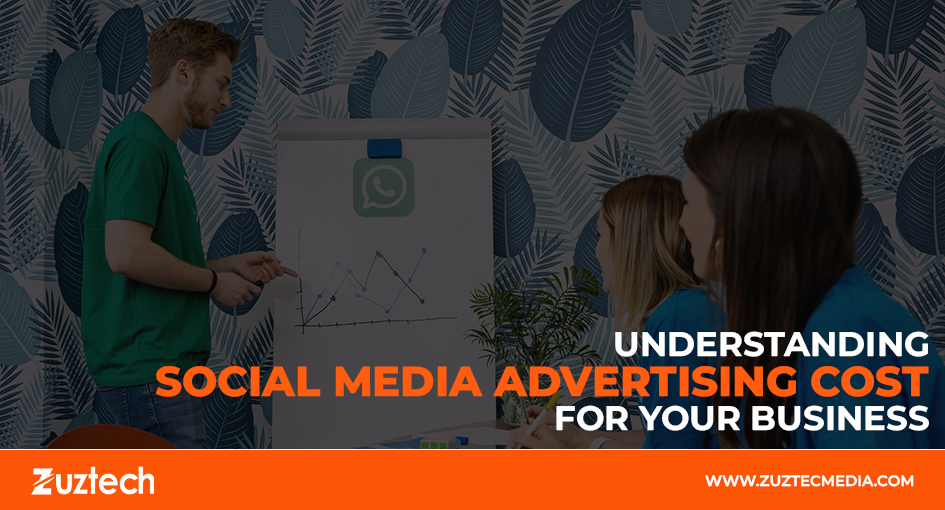
Understanding Social Media Advertising Cost for Your Business
Companies of all kinds are using social media to connect with their target market. However, one of the most important factors to consider when diving into this space is social media advertising cost. For many businesses, understanding the breakdown of costs can be a challenge, as they vary depending on the platform, audience targeting, and ad format. Knowing the different aspects that contribute to costs of social media ads is crucial for optimizing your budget and ensuring you get the best return on investment (ROI).
Different social media platforms, such as Facebook, Instagram, LinkedIn, and Twitter, have unique pricing models and audience demographics. A well-planned advertising campaign can help you control your social media advertising cost by targeting the right audience with effective ad formats. Additionally, businesses need to understand how bidding strategies, audience reach, and ad quality play a role in determining overall costs.
For small businesses especially, working within a budget is key to successful advertising. By gaining a deeper understanding of how social media advertising costs are structured, businesses can develop more effective campaigns that drive results without overspending. With the right strategies in place, you can maximize your reach and increase conversions while keeping your budget intact.
Factors That Influence Social Media Advertising Cost
The social media advertising cost for any business depends on several key factors. These factors vary from one platform to another and can significantly impact the effectiveness and efficiency of your campaigns. Let’s dive into the most important factors that influence these costs:
- Platform Choice: Each social media platform has its own pricing model for advertisements. For example, Facebook, Instagram, Twitter, LinkedIn, and Pinterest all charge differently based on the type of ad you choose to run. Facebook and Instagram tend to offer lower-cost options, but with larger and more general audiences. LinkedIn, on the other hand, may have a higher cost of social media ads due to its niche, professional audience.
- Audience Targeting: One of the main advantages of social media advertising is the ability to target specific audiences. However, more targeted ads often come with a higher price. Narrowing down your audience by age, gender, location, interests, and behaviors can help you reach the right people but may also increase costs. The more specific your targeting, the more you will pay per click or per thousand impressions.
- Ad Format and Quality: Social media platforms offer various ad formats like image, video, carousel, and story ads, each with its own costs. Video ads have higher engagement but may be more expensive. The quality of the ad also influences cost, with high-quality ads likely to lower overall advertising costs due to better performance in ad auctions.
- Bidding Strategy:Social media platforms use a bidding system where businesses compete for ad space, with maximum bids set for clicks, impressions, and conversions. Bidding strategy, including manual, automatic, and cost-per-click or cost-per-impression strategies, significantly impacts advertising costs.
- Ad Placement: Platforms like Facebook and Instagram offer a variety of ad placements, such as in-feed, stories, and in-stream videos. The placement you choose can affect the cost of your campaign. Ads placed in less competitive spots may be cheaper, but they might also be less effective. On the other hand, prime placements that guarantee more visibility and engagement tend to come with higher costs.
How to Optimize Your Social Media Advertising Cost
Optimizing your costs of social media ads is crucial to achieving the best return on investment (ROI) for your business. Here are a few strategies to help you get the most out of your advertising budget:
- Set Clear Goals: Before launching any social media campaign, define what you want to achieve. Whether it’s driving website traffic, increasing conversions, or boosting brand awareness, having clear goals allows you to measure success and optimize accordingly.
- Focus on Audience Testing: Experiment with different audience segments to find out which one responds best to your ads. A/B testing allows you to compare the performance of various targeting options, ensuring that you allocate your budget to the audience that delivers the best results.
- Leverage Retargeting: Retargeting campaigns, which show ads to people who have previously interacted with your brand, often lead to higher conversion rates at a lower cost. By focusing on users who are already familiar with your business, you can optimize your ad spend and reduce waste.
- Optimize Ad Performance: Regularly review the performance of your ads and make adjustments where necessary. If a certain ad is underperforming, change its content, format, or audience targeting to improve results without increasing costs. Monitoring ad performance in real-time allows you to quickly make changes that keep costs down while improving efficiency.
- Utilize Platform Tools:Social media platforms offer analytics tools like Facebook’s Ads Manager, which help businesses monitor ad performance, stay within budget, and maximize campaign effectiveness, ensuring cost-per-click and impressions insights.
In conclusion, understanding and optimizing your social media advertising cost is essential to achieving a successful marketing campaign. With factors such as platform choice, audience targeting, ad format, and bidding strategy influencing the cost, businesses must be strategic in their approach to social media advertising. By setting clear goals, testing different audiences, optimizing ad performance, and leveraging retargeting, businesses can maximize their advertising budget and achieve better ROI.In the long run, a well-executed social media advertising strategy can yield significant results at a cost that aligns with your business goals. By continually refining and adjusting your campaigns, you can ensure that your social media advertising cost remains efficient and effective, ultimately driving growth and success for your business.

